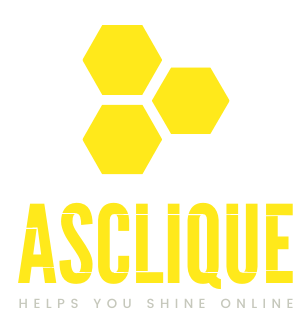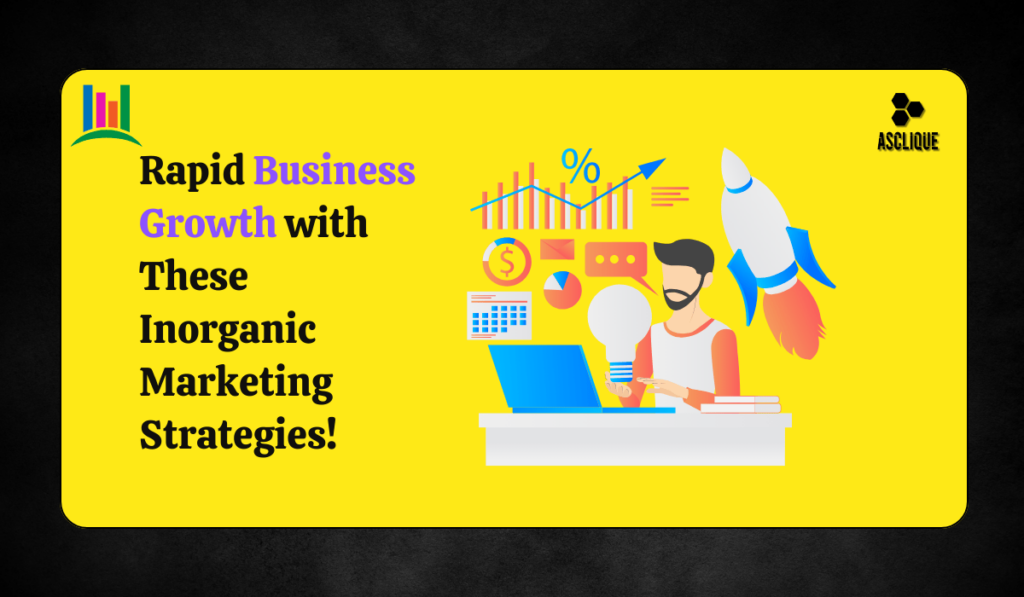Every business wants to grow, and marketing is the key to achieving this objective. While inorganic growth strategies in marketing such as paid advertising provide companies with instant recognition and quick growth, organic approaches are all about building the brand over time. These strategies enable companies to expand quickly, connect with target markets, and generate leads efficiently.
This post will go over a few inorganic growth tactics, their benefits, and how companies may use them to succeed.
What is Inorganic Growth in Marketing?
Inorganic marketing growth is marketing strategies that call for outside capital investment, i.e., spending money on things like advertising, acquisitions, mergers, and strategic alliances. Unlike organic marketing, which leverages free forms of building over time to be visible, inorganic growth gains quick results with the use of capital.
One of the most popular inorganic growth marketing strategies entails spending money on online advertisements to reach specific groups and create immediate leads. Small, medium, and large businesses utilize paid marketing to drive brand awareness, gain new customers, and increase revenue.
Key Inorganic Growth Strategies in Marketing

For fast growth and enhanced market presence, companies can implement different inorganic growth strategies in marketing. These methods give instant outcomes and enable firms to grow efficiently. Some of the most powerful inorganic marketing strategies are mentioned below.
Paid Advertising (PPC & Display Ads)
Paid advertising remains the most successful method of attaining inorganic growth by acquiring more users rapidly. Businesses advertise on sites like Google, Facebook, LinkedIn, and YouTube to pay for leads and make a brand more known.
Forms of Paid Advertising:
- Search Engine Pay-Per-Click (PPC) advertising – Google AdWords and Microsoft AdCenter Ads are platforms by which companies pay for keywords related to their good or service to have their advertising at the very top of a search engine list. This enables potential customers to see the product initially while purchasing alternative services or products.
- Social Media Advertising – Companies can put special advertisement campaigns on social media platforms such as Facebook, Instagram, LinkedIn, and Twitter. The advertisements are customized to fit user interest, behavior, and demographics, and thus there are more chances of conversion.
- Display Advertising – Banner ads on apps and websites create brand recognition and web traffic to business landing pages.
- YouTube & Video Ads – Video ads on platforms like YouTube are more likely to grab the attention of prospective buyers than static images and are an indispensable resource for brands.
Utilizing inorganic marketing metrics like paid advertising, businesses can drive website traffic in an instant, grow their brand, and create conversions.
Influencer Marketing
Influencer marketing involves the use of individuals who already possess a following to promote a firm’s product or service. The tactic is highly effective for firms that wish to attain credibility and develop trust with prospective consumers.
Types of Influencers:
- Micro-Influencers (10k – 100k fans) – Such influencers are perfect for niche promotion since they maintain highly engaged viewers. Their following tends to accept their suggestions and thus they suit niche campaigns.
- Macro-Influencers (100k – 1M followers) – These influencers work best for larger brand awareness campaigns. They have a wider reach and can introduce a business to more people.
- Celebrity Influencers (1M+ followers) – For international exposure and massive visibility, brands collaborate with celebrities who possess a large online fan base. Such collaborations are usually expensive, though.
By using influencer marketing, companies can create leads and drive sales quicker than an organic brand development effort.
Affiliate Marketing
Affiliate marketing is a budget-friendly inorganic tactic by which companies affiliate with affiliates—bloggers, influencers, or marketers—who share their products or services. They earn a fee for every effective referral or sale.
How It Works:
- Companies give affiliates individual tracking links.
- When a customer buys using the link, an affiliate gets a commission.
- Firms only compensate for sales made, hence a performance-based marketing system.
Why It’s Effective:
- Cost-Effective – Businesses only pay for results and not impressions on ads.
- Scalable – Businesses can hire several affiliates to reach different sets of people.
- High ROI – Since affiliates are only paid for completed sales, the return on investment (ROI) is more likely to be higher compared to conventional advertising.
Affiliate marketing is an unnatural expansion technique with minimal risk in advertising such as pay-per-click advertising since businesses only remit payment for output.
Sponsored Content & Advertorials
Sponsored content is compensated media, publishers, or bloggers to create and disseminate brand content that promotes a business’s products or services. Sponsored content differs from other forms of advertising in that it is designed to blend in naturally with editorial content, thus sounding more credibly and interestingly.
Typical Forms of Sponsored Content:
- Guest Blogging on Thought-Leading Blogs – Brands pay to have the content featured on popular industry blogs to generate traffic and boost search results.
- Sponsored Articles in Web Magazines – Businesses can sponsor articles in niche-interest web magazines to reach an even more appropriate audience.
- Industry Expert Paid Reviews – Companies work with respected experts or influencers to review and endorse their products.
Sponsored content improves credibility and enables brands to reach out to potential customers in a more natural manner while continuing to employ inorganic strategies for growth in marketing such as paid advertising.
Strategic Alliances and Acquisitions
Strategic alliances, collaborations, and acquisitions are inorganic long-term growth strategies that firms employ to grow rapidly. Such strategies allow companies to gain a larger market share, increase their product offerings, and solidify their market presence.
- Buying Competitors: Companies may boost their client base and remove competitors from the market by buying competitors. Compared to using organic development tactics, this approach enables organizations to take control of their market sooner.
- Merger with Similar Firms Companies may join together, enhance the offerings, and also expand the client support by mergers. For instance, an end-to-end digital service that could be provided by a SaaS firm acquiring a cyber security company.
- Creating Strategic Partnerships: By joining hands with credible companies, companies are able to pool funds, access new markets, and capitalize on brand equity. To ensure optimum client satisfaction and delivery quality, for example, a small web firm may tie up with a delivery firm.
By accelerating growth and optimizing revenue potential, these inorganic growth strategies provide companies with a competitive edge.
Benefits of Inorganic Growth Strategies
Companies seeking quick growth and instant visibility tend to resort to inorganic marketing growth strategies such as paid advertising. Such strategies have several benefits over organic methods, enabling brands to grow quicker and surpass competitors.
Quicker Business Growth
- Unlike organic growth, which could take months or years to generate results, inorganic strategies provide instant exposure. Paid advertising, for example, allows businesses to be at the top of search results or social media feeds instantly. This instant visibility allows businesses to create leads, drive traffic, and increase sales without waiting for organic reach to build up over time.
Targeted Reach
- Among the biggest benefits of inorganic growth strategies is that they can target certain audiences. Online ad platforms like Google Ads and Facebook Ads make it possible for companies to reach their audience based on demographics, geography, interests, and web behavior. This helps marketing campaigns reach the right people at the right time, optimizing ad spend.
Greater Conversion Rates
- Since inorganic marketing initiatives point towards specific offers, they will have higher conversion rates. An ideally optimized PPC campaign or social media ad can create instant activity, i.e., increased sign-ups, sales, or inquiries. Compared to organic, where buyers may take some time to locate a brand, inorganic means putting companies in front of buyers who are willing to make a purchase.
Competitive Advantage
- Such companies investing on inorganic expansion initiatives in promoting such as paying for promotion secure a robust aggressive advantage. Through actively promoting products or services, companies are able to control their market and grab customer attention ahead of competitors who only use organic means. In rapidly changing industries, this benefit can prove to be a major difference in revenue and market share.
Challenges of Inorganic Growth Strategies
Although inorganic growth strategies in marketing provide quick growth and visibility, they have some challenges that companies have to work around.
High Costs
- Paid advertisement entails constant spending. Unlike organic methods, whereby content will attract traffic in the long term, inorganic marketing needs constant spending. When businesses stop showing ads, traffic, and conversions slow down, so having a well-thought-out budget is essential.
Short-Term Effect
- Unlike content marketing or search engine optimization, which build long-term brand credibility, inorganic strategies tend to yield short-term results. Visibility decreases after a campaign has reached its end, unless another campaign is launched. This is more applicable for short-term promotion instead of building long-term brands.
Ad Fatigue
- Customers who are bombarded with incessant adverts will end up ignoring them, resulting in suboptimal returns. The viewers will get desensitized to adverts after a while, and there will be less engagement and conversions. This can be rectified by maintaining newly updated ad creatives, revising the targeting specifications, and using A/B testing.
Best Practices for Successful Inorganic Growth
To make sure marketing campaigns towards inorganic expansion such as paid advertising are effective, the following best practices should be followed by companies:
- Set Clear Objectives – Set specific objectives, whether brand awareness, lead gen, or sales.
- Land Page Optimization – Have seamless user experience, quick load time, and persuasive CTAs.
- Leverage Data Analytics – Monitor important KPIs to optimize campaigns and enhance ROI.
- Mix Inorganic and Organic Approaches – Blend paid ads with SEO, content marketing, and social media interactions for sustainable, long-term growth.
Through resolution of these challenges and adoption of best practices, companies can realize more efficient inorganic expansion while maximizing their marketing budgets.
Conclusion
In the current competitive market, organic marketing alone is not sufficient. Inorganic marketing strategies such as paid advertising give companies a chance to grow rapidly, become more visible, and reach their objectives. Using PPC, influencer collaborations, and strategic acquisitions, businesses are able to grow at a faster pace while complementing their long-term organic approaches.
FAQ’s
How are organic and inorganic growth marketing strategies distinct from one another?
Organic growth marketing strategies are concerned with developing brands over the long term through SEO, content marketing, and social media, whereas inorganic marketing growth strategies such as paid advertising include paying for ads, influencer marketing, and acquisitions to gain quick results.
What is the contribution of paid advertising to business growth?
Paid advertising like Google Ads and social advertising assists companies in gaining instant visibility, drawing targeted traffic, and generating conversions. Compared to organic means, it provides instant impacts by putting companies in front of potential customers immediately.
What are the greatest weaknesses of inorganic growth strategies?
Some of the greatest challenges are high expense, temporary effect, and ad wearout, wherein repetitive exposure to advertisements results in diminishing engagement. In response to these, companies must optimize campaigns, leverage data analysis, and regularly update ad creatives.
Are inorganic and organic marketing tactics interchangeable?
Yes, companies have to balance inorganic marketing tactics such as paid advertising with organic tactics such as SEO and content marketing. Doing so guarantees quick visibility while creating long-term brand credibility.
How do companies measure the success of inorganic marketing strategies?
Its performance is measured in terms of key performance indicators (KPIs) such as click-through rates (CTR), conversion rate, cost per acquisition (CPA), and return on ad spend (ROAS). Ongoing monitoring and optimization maximize the efficiency of the campaign.

